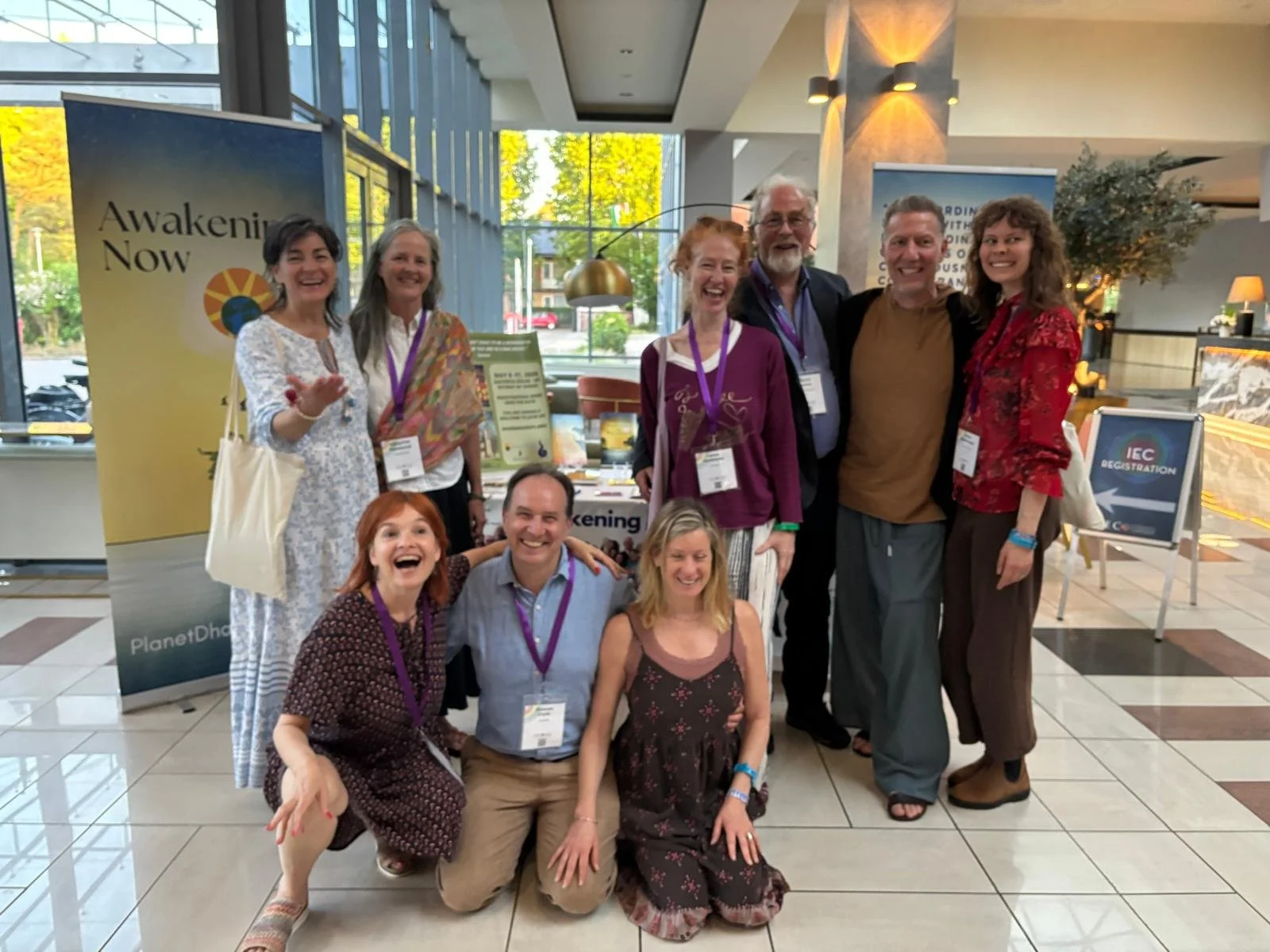Conscious Community: Sharing Buddhist Wisdom at IEC 2025
It was a delight to spend time with our global sangha, both from Clear Sky Meditation Centre in western Canada and Dharma Europe members from across Europe. We had the joy and honour of participating in the Integral European Conference (IEC) 2025, held on the shores of Lake Balaton in Hungary, making this gathering a truly international celebration of integral theory applied in conscious community.
Together, guided by Catherine Pawaserat Sensei—a wise being deeply versed in the Vajrayana Buddhist tradition — we stepped onto an international stage to share teachings, art, and practices that bridge ancient wisdom and modern life.
The IEC Conference has long been a meeting place for thinkers, practitioners, artists, and visionaries exploring the evolution of consciousness. A few hundred participants from across the world gathered to exchange insights, learnings, practices, and inspiration. Against this backdrop, our sangha’s contribution found a warm and receptive audience.
Some of the ways we shared was through workshops that invited people into heartfelt exploration through music, movement and dialogue. In All My Relations: You, Me, We, This, Evangelos Diavolitsis and Nishta Matarese drew on integral theory to reflect on the ways we relate to ourselves, to each other, and to our communities. Participants explored for example: what is a spiritual friend?
In another workshop with Karen McAllister – Money and Spirituality: Integrating Wholeness, we entered into our often unexamined relationship with money, especially in relation to spirituality. Together, we delved into the beliefs and emotions that shape how we give, receive, and hold value. It was moving to see people open up, challenge old patterns, and consider how financial clarity and generosity can become part of our conscious growth, rather than a contradiction to it.
Lisa Feder of Dharma Europe, offered a workshop called West African Music: Dancing the Four Quadrants, weaving orally transmitted music of west Africa into a joyful act of self-expression and connection.
Beyond the workshops, our presence at the conference blossomed in other creative ways. One memorable moment was an artistic performance – From the Primal to the Divine – by Maya Lewandovsky, a member of our sangha whose work blended dance, singing, and the reading of spiritual text. Through graceful movement and powerful voice, Maya led the audience on a shared journey of struggle and emotional catharsis. It was a living reminder that transformation isn’t limited to words and concepts—it also flows through the body, breath and heart. Many attendees were visibly moved, and some shared afterward how the performance helped them touch hidden parts of themselves.
A quieter yet meaningful moment came late one night, when a few of us gathered to prepare a shrine and table for an early morning Tibetan ritual/teaching by Sensei. Implements carried all the way from Canada were carefully placed on the white-cloth`d shrine. However, one object was missing – the torma. Tormas are a fundamental part of Tibetan Buddhist rituals, expressing reverence and devotion. The careful construction and decoration of tormas imbue them with profound symbolism, connecting the practitioner to the spiritual realm. They are also a powerful symbol of generosity, as they are offered to various deity beings with the intention of benefiting all.
With creativity and care at the midnight hour, we shaped our `sustainable torma` from stale bread buns I fished out of my luggage, and rice milk from a left-over open carton in a snacks fridge. Working together, tired but inspired, we giggled at our resourcefulness and how even small acts like this can become part of our practice, infusing ancient rituals with modern ecological awareness. The simple act of turning discarded bread into something sacred became its own quiet teaching about impermanence, respect, and renewal.
Together we exemplified how our sangha supports each other—to deepen practice, cultivate mindfulness in daily life, and build a conscious community that feels both rooted and adaptive to modern challenges.
In our midst was Catherine Pawaserat Sensei. Her presence radiated wisdom, interest and clarity. Whether offering formal teachings or engaging in spontaneous conversations, Sensei met people exactly where they were, embodying the living spirit of the Vajrayana path. Her words reminded many that awakening isn’t a distant goal but an ever-present possibility that can blossom through daily practice, honesty, and the courage to turn toward what is uncomfortable.
Our shared experience of coming together across continents was exhilarating. It felt to me like we embodied the dharma as something very human—not separate from life’s messiness but woven through it. It is also why we not only share these teachings at our established centres but also online, because they speak to something universal in all of us.
As the conference days flowed by, there was a feeling of collectivity and emerging `we` space. Participants from diverse traditions and backgrounds came together, united by a curiosity about integral theory and how it applies to personal growth, connection, and what it means to live awake in the modern world.
Leaving Lake Balaton, we carried with us more than memories. We brought back renewed inspiration to deepen our own practice, to keep questioning and learning, and to share generously with those around us. Our sangha felt to me like the living expression of what conscious community can look like: people coming together, rooted in tradition and open to new possibilities, united by the shared hope of awakening for the benefit of all.
